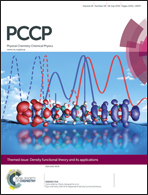The mechanism of selective molecular capture in carbon nanotube networks
Abstract
Recently, air pollution issues have drawn significant attention to the development of efficient air filters, and one of the most promising materials for this purpose is nanofibers. We explore here the mechanism of selective molecular capture of volatile organic compounds in carbon nanotube networks by performing atomistic simulations. The results are discussed with respect to the two key parameters that define the performance of nanofiltration, i.e. the capture efficiency and flow resistance, which demonstrate the advantages of carbon nanotube networks with high surface-to-volume ratio and atomistically smooth surfaces. We also reveal the important roles of interfacial adhesion and diffusion that govern selective gas transport through the network.


 Please wait while we load your content...
Please wait while we load your content...